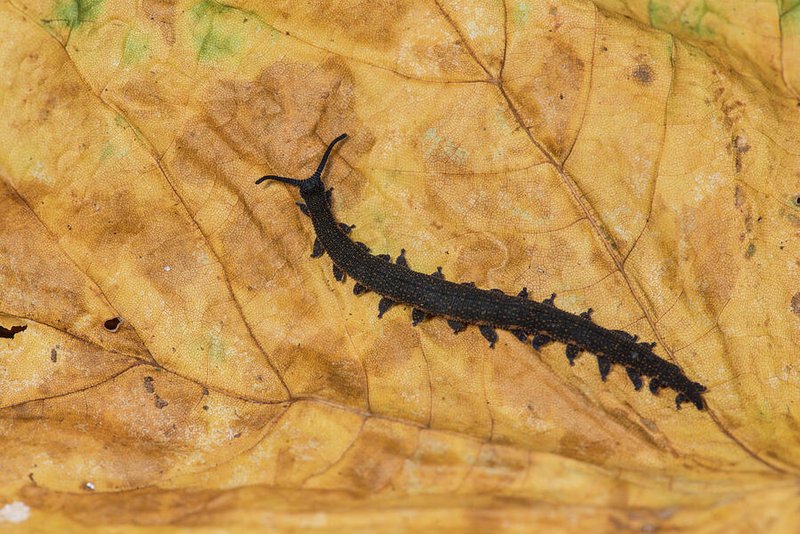
When you think about building a habitat for velvet worms, you’re basically becoming a curator of a miniature world. You need to keep in mind their ideal temperature, humidity, and even the type of soil. Setting up their environment is crucial for their health and happiness. If you’re ready to dive into the world of these intriguing invertebrates, let’s explore how to create the perfect sanctuary for them.
Understanding Velvet Worms
Before we jump into habitat construction, it helps to know a little about velvet worms themselves. These critters, scientifically known as *Onychophora*, are neither insects nor worms but belong to their own group of soft-bodied animals. They have a segmented body covered in tiny, velvety hairs, which give them their name. Most importantly, they thrive in moist environments, which is key when considering their habitat.
You might be wondering about their behavior. Velvet worms are fascinating hunters that use a sticky slime to trap their prey. They can be quite active at night, hunting in the dampness of their environment. Understanding how they live and hunt helps us create an environment that supports their natural behaviors, which is essential for their well-being.
Choosing the Right Container
Your first step in building a habitat for velvet worms is choosing the right container. It should be spacious enough to allow them to move around but also cozy enough to maintain humidity levels. A glass terrarium is a popular option because it lets you see your velvet worms while providing a controlled environment.
When selecting a container, consider the following:
- Size: Aim for at least a 10-gallon tank for a small group of velvet worms.
- Material: Glass or acrylic work best as they retain heat and humidity effectively.
- Ventilation: Ensure there are holes or a mesh top to allow airflow while minimizing escape risks.
Finding the right container might feel a bit like shopping for a new home—size, structure, and design all matter! Think about how you want to arrange their space, and choose something that inspires you.
Creating the Perfect Substrate
The substrate is the foundation of your velvet worm habitat. It’s essential for mimicking their natural environment. A mix of **soil**, **leaf litter**, and **moisture-retaining materials** like coconut coir works best. This combination supports the worms’ moisture needs while allowing them to burrow and hide, which makes them feel safe and secure.
You might wonder how much substrate to add. Aim for about 2-3 inches deep. This depth allows the worms to dig a little without making it too hard for them to get around.
- Soil: Use organic, chemical-free potting soil.
- Leaf litter: Collect from local trees, making sure it’s clean and free from pesticides.
- Coconut coir: This helps retain moisture and adds structure.
Mixing all these ingredients together can feel like making a cake; the right ratios will create the ideal “batter” for your velvet worms.
Maintaining Humidity and Temperature
Humidity is vital for velvet worms; they need it to survive. Ideally, keep humidity levels between 70% and 90%. You can achieve this by misting the habitat regularly and placing a shallow water dish inside.
Temperature is equally important. Velvet worms thrive in cooler conditions, typically between 65°F and 75°F (18°C to 24°C). If the temperature gets too high, they can become stressed. A small heating mat can be used under the tank to ensure consistent warmth, but be sure to monitor it closely.
Keeping humidity and temperature at optimal levels might feel like running a small climate control system. You might want to invest in a hygrometer and thermometer to keep track of these conditions easily.
Providing Appropriate Lighting
Lighting plays a crucial role in the habitat of velvet worms. However, unlike many other pets, they prefer dim lighting. You don’t need any intense light sources; just a gentle, indirect light will do. Too much direct light can dry out their environment and stress them out.
Consider using LED lights that emit low heat. You can set them on a timer to ensure that the worms have a natural day and night cycle without unnecessary bright exposure. Gently illuminating their habitat creates a cozy, inviting atmosphere much like a rainforest floor during twilight—perfect for these nocturnal creatures.
Feeding Your Velvet Worms
Feeding is another essential aspect to consider. Velvet worms primarily eat small insects, and live food is best for their diet. Mealworms, fruit flies, or small crickets can be excellent choices.
You might be thinking, “How often should I feed them?” Generally, once a week is sufficient, but be sure to monitor their health and adjust as needed. If they seem to be growing or behaving unusually, a little extra food won’t hurt.
Make sure to provide just enough food to prevent leftovers from spoiling, which can lead to unwanted pests in their habitat. Think of it like finding the right balance in a recipe—too much or too little can throw off the whole dish.
Regular Maintenance and Monitoring
Regular maintenance is key to keeping your velvet worms happy and healthy. You’ll want to check their habitat weekly, ensuring humidity levels are stable, and the substrate is clean. Removing any uneaten food and replacing the substrate every few months is a good practice.
Consider creating a maintenance schedule. For example, you might check the humidity on Mondays, feed them on Wednesdays, and clean on Saturdays.
Remember, the goal is to create a thriving environment for your velvet worms, so don’t hesitate to tweak things as you learn what works best. Just like tending a garden, your attention will help them flourish.
Building a suitable habitat for captive velvet worms can be an incredibly rewarding experience. Not only do you get to learn about these intriguing creatures, but you also create a space that allows them to thrive. From choosing the right container and substrate to maintaining proper humidity and temperature, it’s all about mimicking their natural environment as closely as possible.
So, gather your supplies, plan out your setup, and get ready to enjoy the charm of these one-of-a-kind invertebrates. Creating a tiny world for your velvet worms isn’t just an act of care; it’s a chance to explore the beauty of nature right in your home. Happy worm-keeping!

